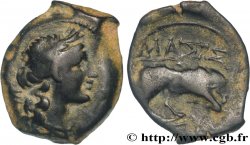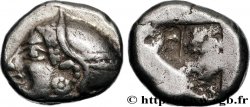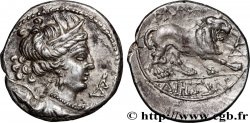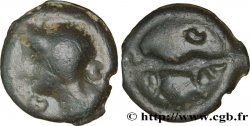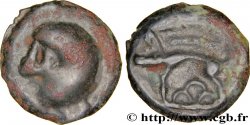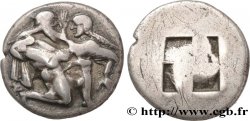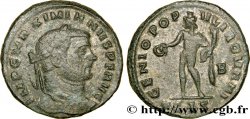E-auction 59-26937 - bga_260450 - MASSALIA - MARSEILLES Litra du type du trésor d'Auriol à la tête d'Artémis, revers lisse
得先注册又得到批准才可以报价。为了报价注册. 客户应该得到公司允许,那种过程需要 48 个小时。别等出售结束那一天才登记。您报价的话等于您赞成买那物品,而且按« 保价 » 证明您接受 cgb.fr 因特网拍卖使用法.
报价时只可以出全数值欧元总额。物品描述也说明销售结束时间,结束后出价都不会生效。 报价命令转达有时变动,等到最后秒钟增加否决的可能会。想多了解的话请注意 因特网拍卖常问
购货人不付费
购货人不付费
| 估算 : | 190 € |
| 价格 : | 68 € |
| 最高出价 : | 74 € |
| 拍卖结束日期 : | 02 June 2014 15:16:30 |
| 竞拍人 : | 7 竞拍人 |
种类 Litra du type du trésor d'Auriol à la tête d'Artémis, revers lisse
日期: c. 470-450 AC.
铸币厂名称/城市 Marseille (13)
材质 silver
直径 9 mm
重量 0,77 g.
稀少度 R3
关于品相的说明
Flan un peu court avec un avers assez bien centré mais un peu mou, et un revers complètement lisse. Très légère patine, plus sombre au revers
出版目录中的项代码 :
正面
正面的文字 ANÉPIGRAPHE.
正面的说明书 Tête d'Artémis à gauche, la coiffure en pointillés relevés sur la nuque.
背面
背面的文字 ANÉPIGRAPHE.
背面的说明书 Lisse sans carré creux.
评论
Cette monnaie est très inhabituelle avec un revers lisse sans aucun carré creux.
Cette particularité n’est pas sans rappeler la monnaie n° 6 publié dans le CN 183 de mars 2010. Le type de droit associé à ce revers est différent, dans le cadre d’une étude sur la série à la tête d’Apollon au crobylos à droite... Mais le revers lisse sans carré creux est assez inhabituel pour pouvoir être mis en relation !
Ce rare type appartiendrait plutôt à la Provence au sens large. L'exemplaire n° 9 de l'Annexe 2 de Furtwängler (= BN 504) pèse 0,89 gramme et ceux du trésor de la RN 1983 ont un poids moyen de 0,91 gramme.
This coin is very unusual with a smooth reverse without any hollow square. This particularity is reminiscent of coin no. 6 published in CN 183 of March 2010. The type of obverse associated with this reverse is different, in the context of a study on the series with the head of Apollo with a crobylos to the right... But the smooth reverse without a hollow square is unusual enough to be able to be linked! This rare type would rather belong to Provence in the broad sense. Copy no. 9 of Furtwängler's Appendix 2 (= BN 504) weighs 0.89 grams and those of the RN 1983 treasure have an average weight of 0.91 grams
Cette particularité n’est pas sans rappeler la monnaie n° 6 publié dans le CN 183 de mars 2010. Le type de droit associé à ce revers est différent, dans le cadre d’une étude sur la série à la tête d’Apollon au crobylos à droite... Mais le revers lisse sans carré creux est assez inhabituel pour pouvoir être mis en relation !
Ce rare type appartiendrait plutôt à la Provence au sens large. L'exemplaire n° 9 de l'Annexe 2 de Furtwängler (= BN 504) pèse 0,89 gramme et ceux du trésor de la RN 1983 ont un poids moyen de 0,91 gramme.
This coin is very unusual with a smooth reverse without any hollow square. This particularity is reminiscent of coin no. 6 published in CN 183 of March 2010. The type of obverse associated with this reverse is different, in the context of a study on the series with the head of Apollo with a crobylos to the right... But the smooth reverse without a hollow square is unusual enough to be able to be linked! This rare type would rather belong to Provence in the broad sense. Copy no. 9 of Furtwängler's Appendix 2 (= BN 504) weighs 0.89 grams and those of the RN 1983 treasure have an average weight of 0.91 grams







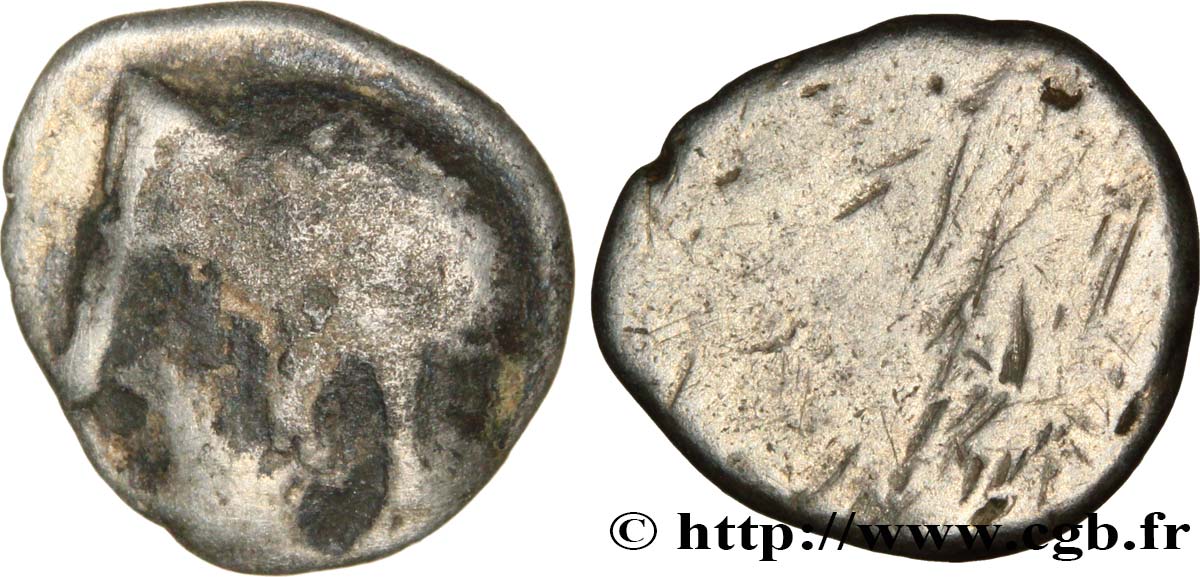
 对产品描述纠错
对产品描述纠错 打印
打印 分享我的选择
分享我的选择 提问
提问 Consign / sell
Consign / sell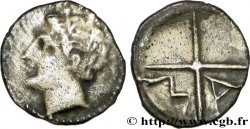
 产品介绍
产品介绍
